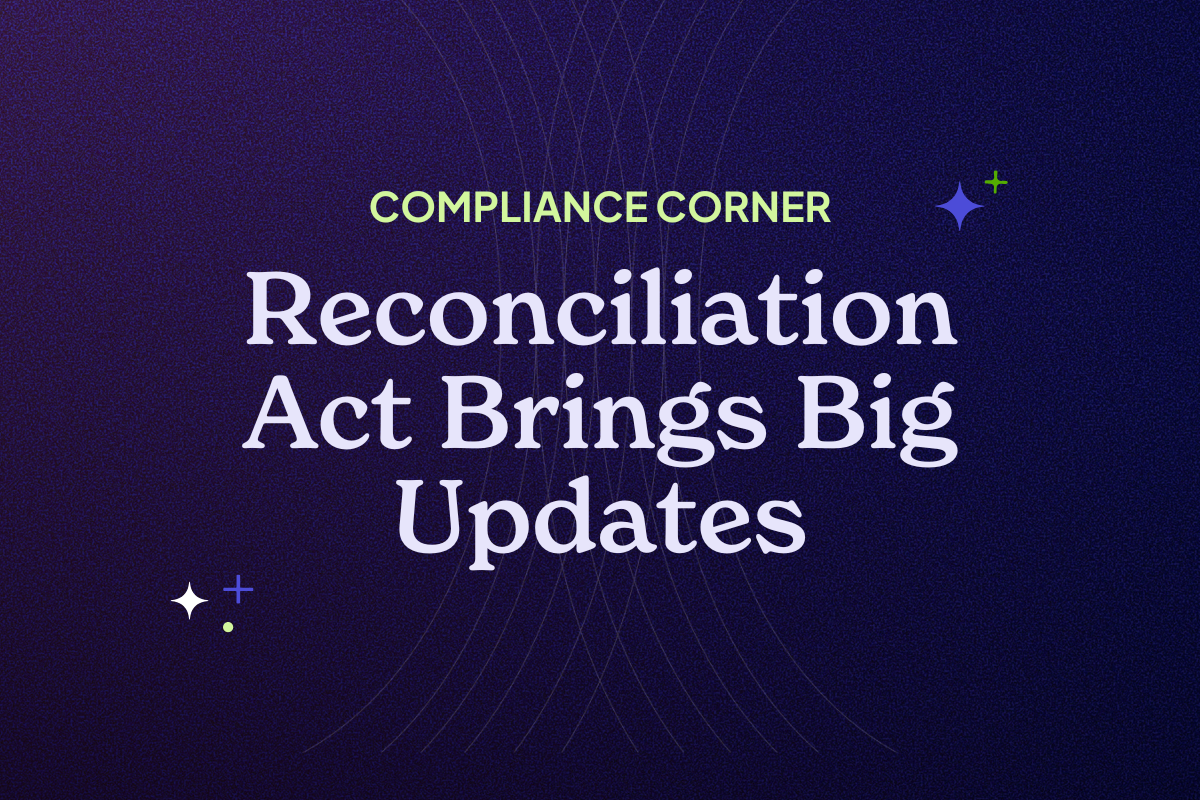Key Employee Benefits Changes in the Reconciliation Act (Formerly the One Big Beautiful Bill Act)

Selerix Compliance Corner Update!
On July 3, 2025, Congress passed a major reconciliation bill—originally called the One Big Beautiful Bill Act—that includes several provisions impacting health and welfare benefit plans.
Here’s what employers need to know:
HSA Compatibility Expanded
Telehealth and Remote Care Services
The bill permanently extends the pandemic-era flexibility that allowed high-deductible health plans (HDHPs) to cover telehealth and other remote care services before the deductible—without impacting HSA eligibility. This applies retroactively to plan years starting after December 31, 2024. Employers can amend their plans to offer no-cost telehealth services.
Direct Primary Care Arrangements
Beginning January 1, 2026, employees can participate in an HSA even if they’re enrolled in a direct primary care service arrangement, as long as:
- The monthly fee doesn’t exceed $150 for an individual or $300 for more than one person (indexed annually).
- The arrangement excludes general anesthesia procedures, most prescription drugs (except vaccines), and lab services outside of typical primary care.
- Fees can be paid tax-free from an HSA.
Bronze & Catastrophic Exchange Plans
Starting in 2026, all bronze and catastrophic level Exchange plans will be treated as HSA-compatible HDHPs, even if they don’t meet traditional HDHP requirements.
Dependent Care Assistance Program (DCAP) Limit Increase
For plan years beginning January 1, 2026, the DCAP tax-free limit rises to:
- $7,500 for single taxpayers and married couples filing jointly
- $3,750 for married individuals filing separately
Employers offering DCAP should update plan documents, benefit summaries, and open enrollment materials to reflect the higher limit, as this may influence total rewards and vendor integrations
Paid Family & Medical Leave Credits may also influence total rewards and vendor integrations.
Student Loan Repayment Assistance
The bill permanently extends the provision allowing employers to pay or reimburse up to $5,250 annually toward employees’ student loans tax-free under an educational assistance program.
- A formal written plan is required.
- Employers must provide reasonable notice to eligible employees.
- The $5,250 limit will be indexed for inflation starting after 2026.
While the core Employer Mandate (4980H) rules still apply, you can expect shifts in the ACA marketplace and Medicaid environment including coverage eligibility/subsidy rules over the next 12–24 months.
Action Steps for Employers:
- Review your current benefit offerings for opportunities to take advantage of new HSA, DCAP, and student loan repayment provisions.
- Coordinate with your benefits advisors to update plan documents and communications.
- Prepare employee messaging for open enrollment to highlight these changes. Download our Open Enrollment Guide for a full, year-long roadmap to prepare your employees and stay ahead of the curve.
Disclaimer: Selerix does not provide legal, regulatory or tax guidance, or advice. If legal advice counsel or representation is needed, the services of a legal professional should be sought. The information in this post is intended to provide a general overview of the topics and services contained herein. Selerix makes no representation or warranty as to the accuracy or completeness of the post and undertakes no obligation to update or revise the post based upon new information or future changes.

